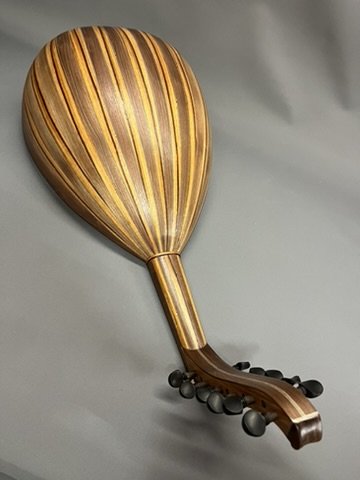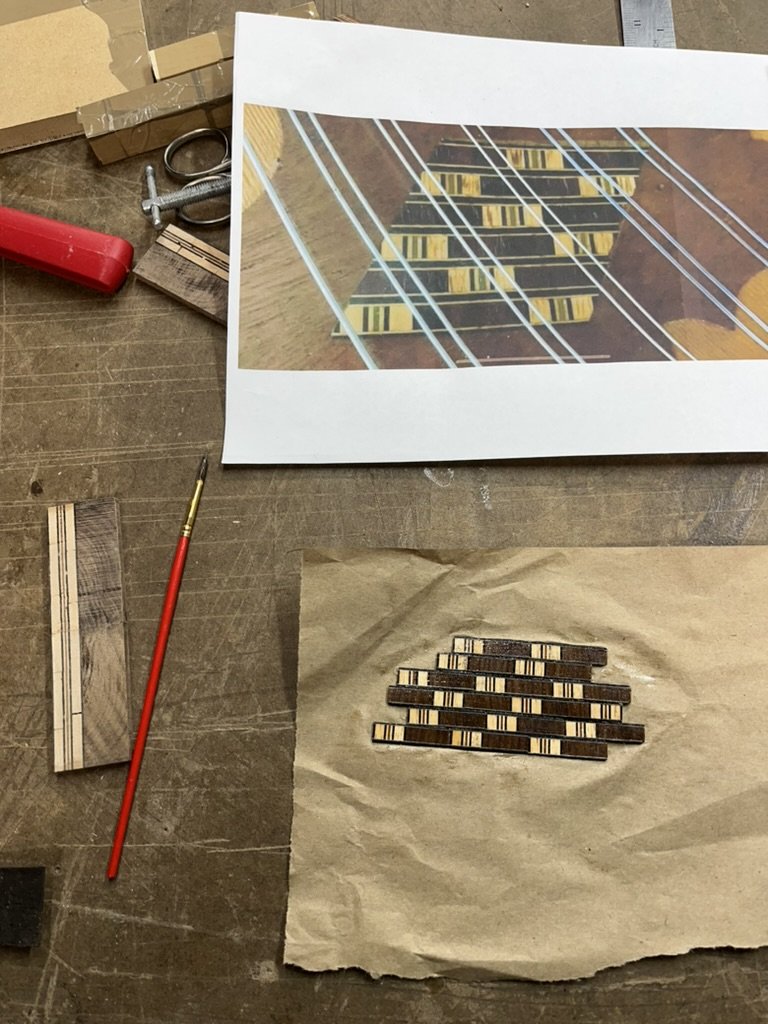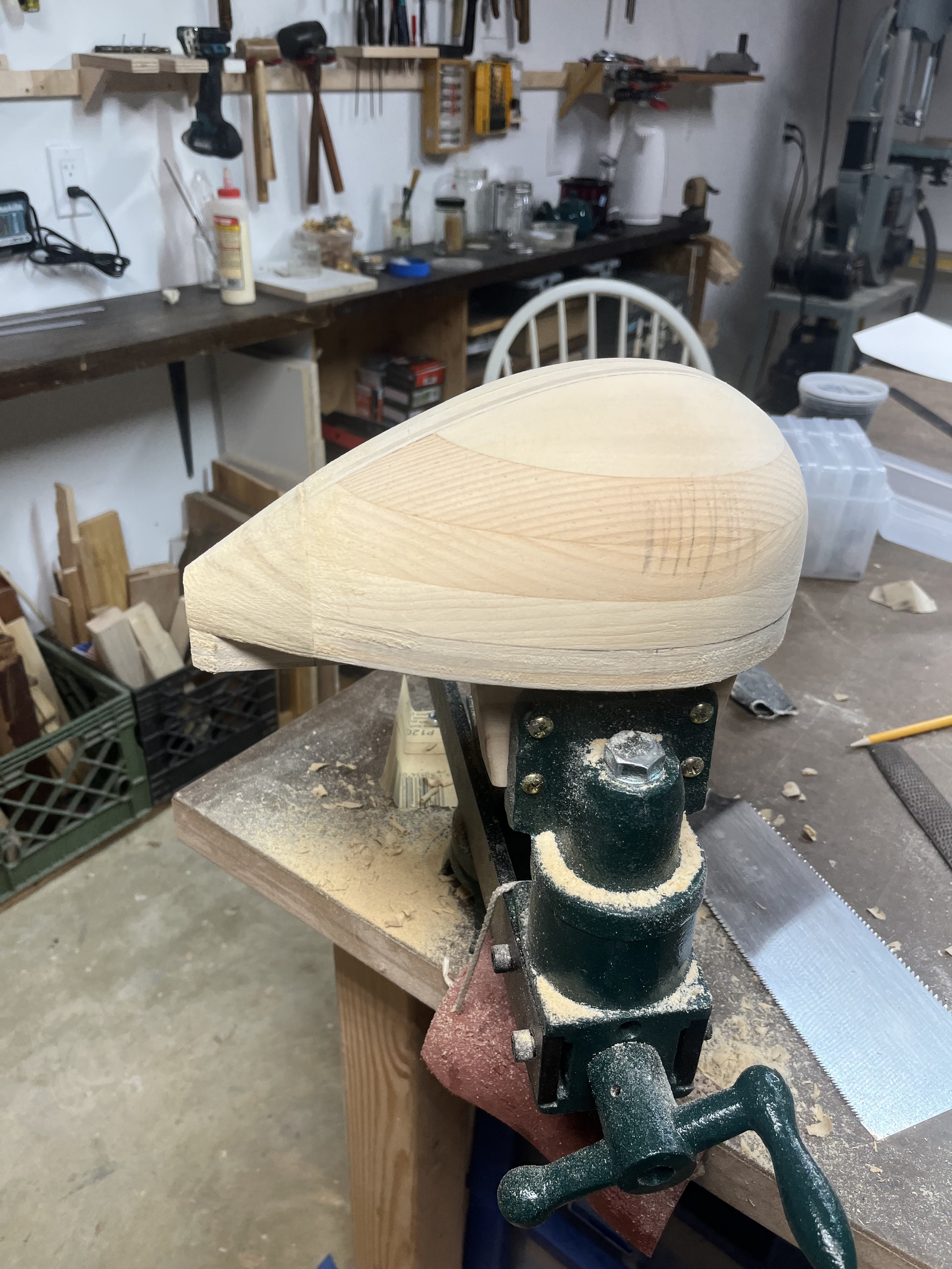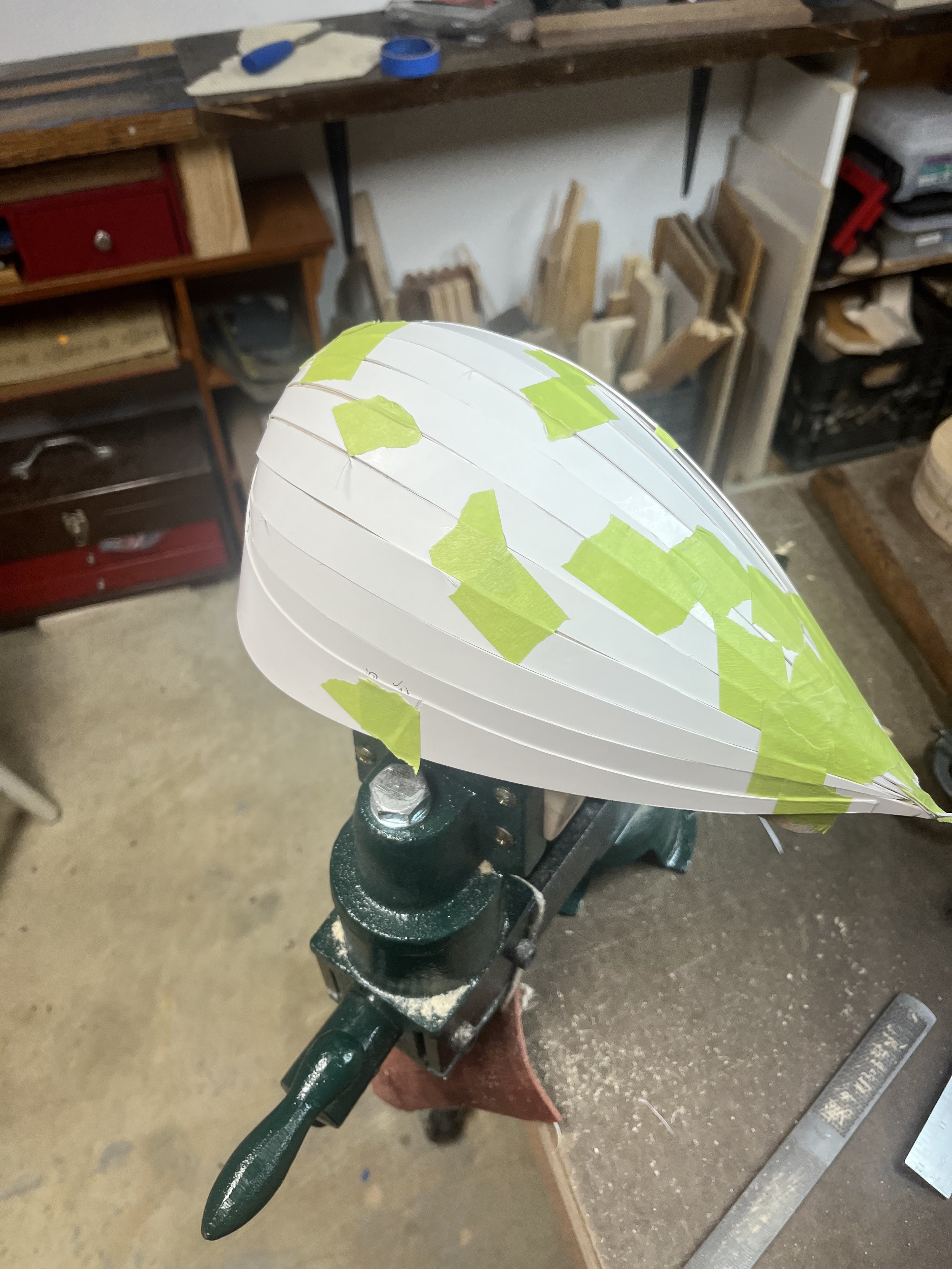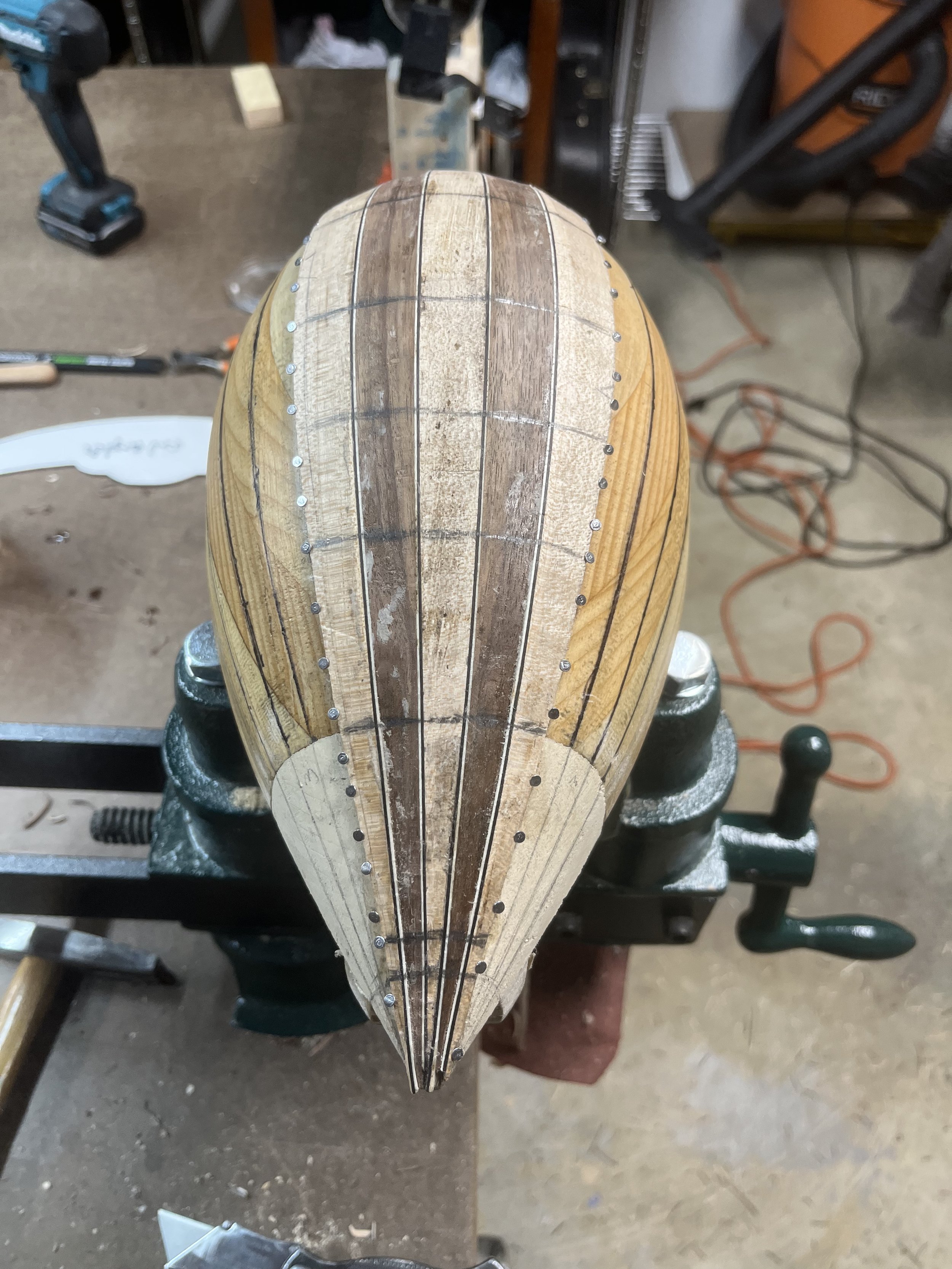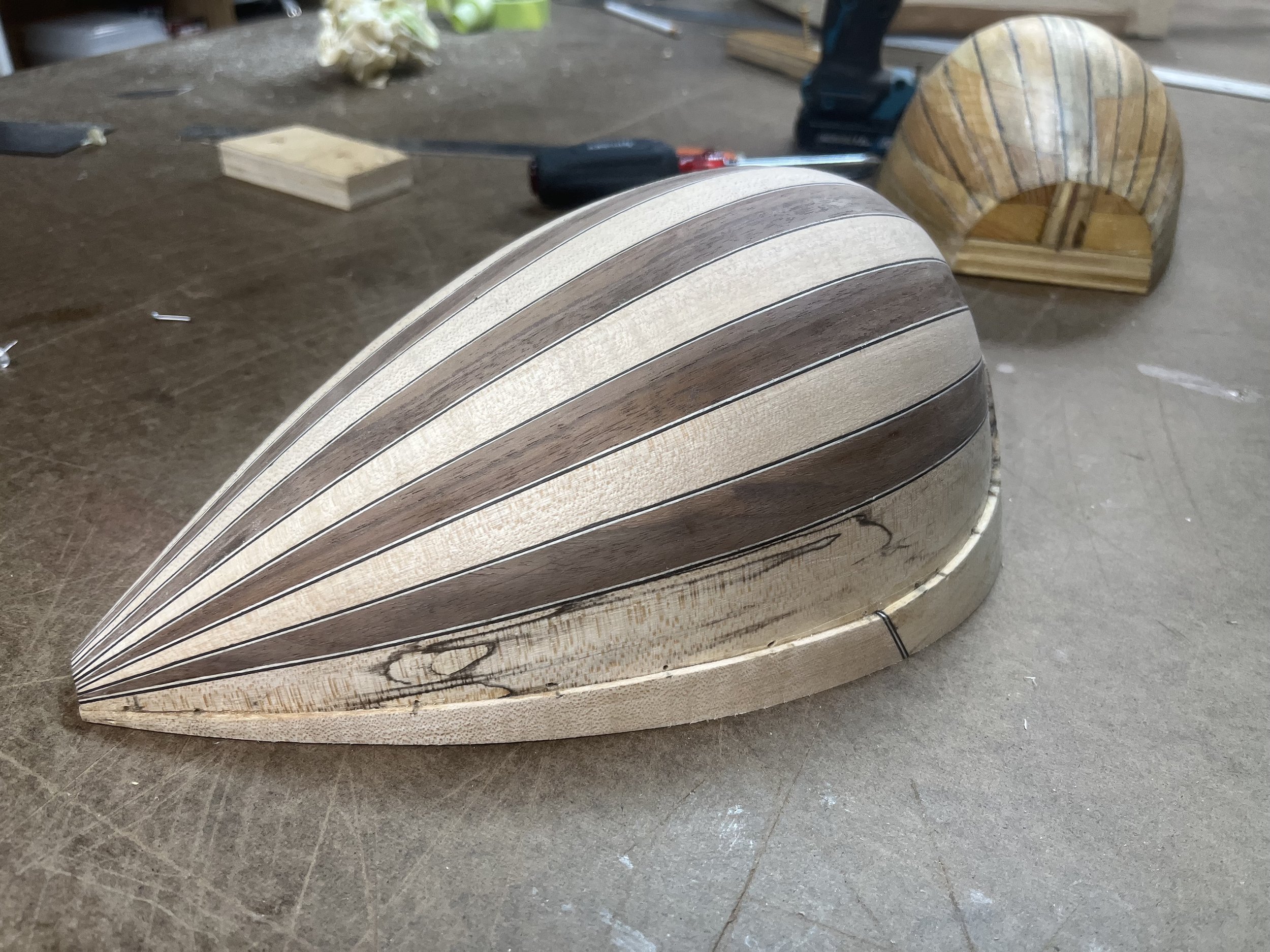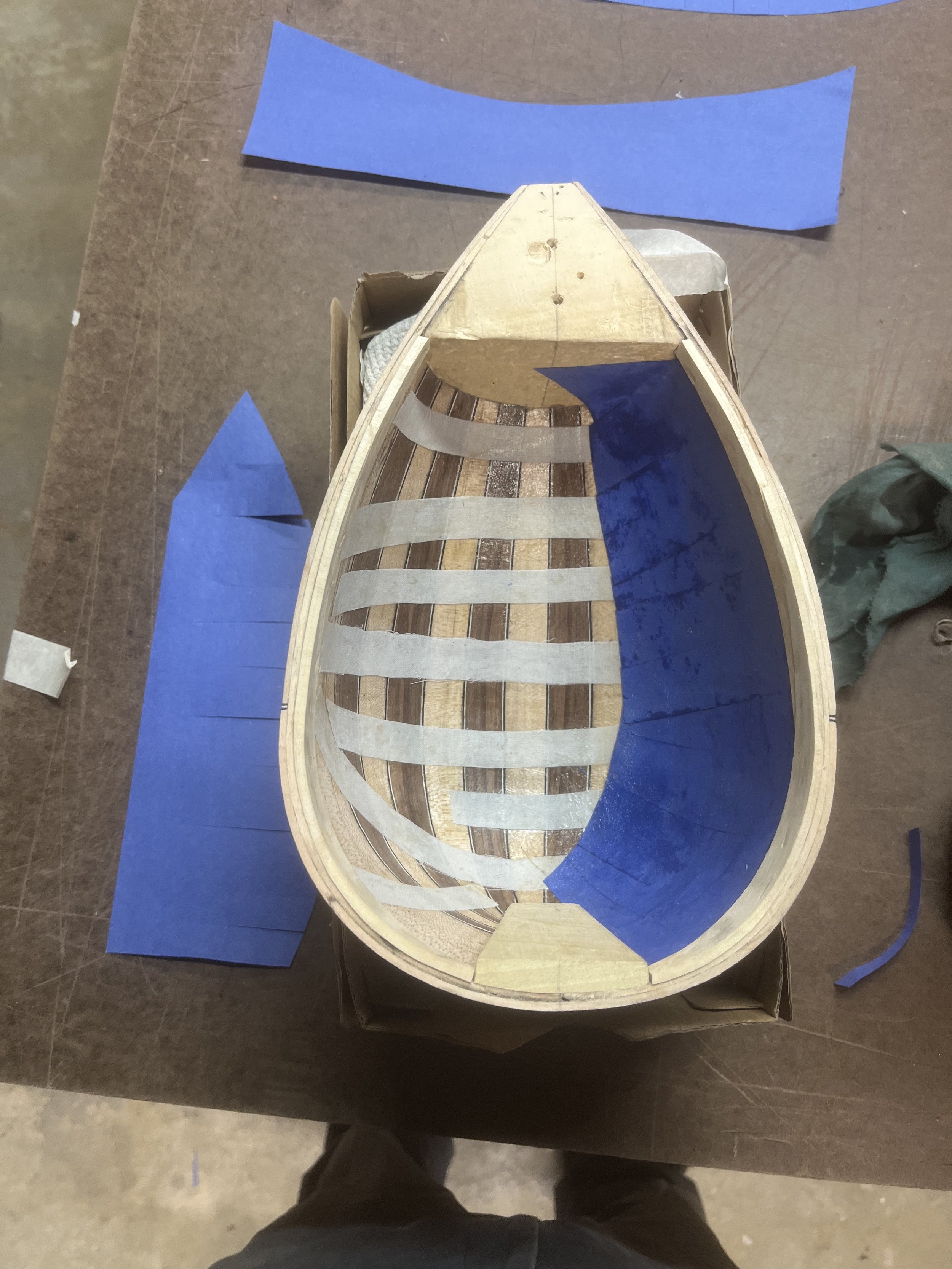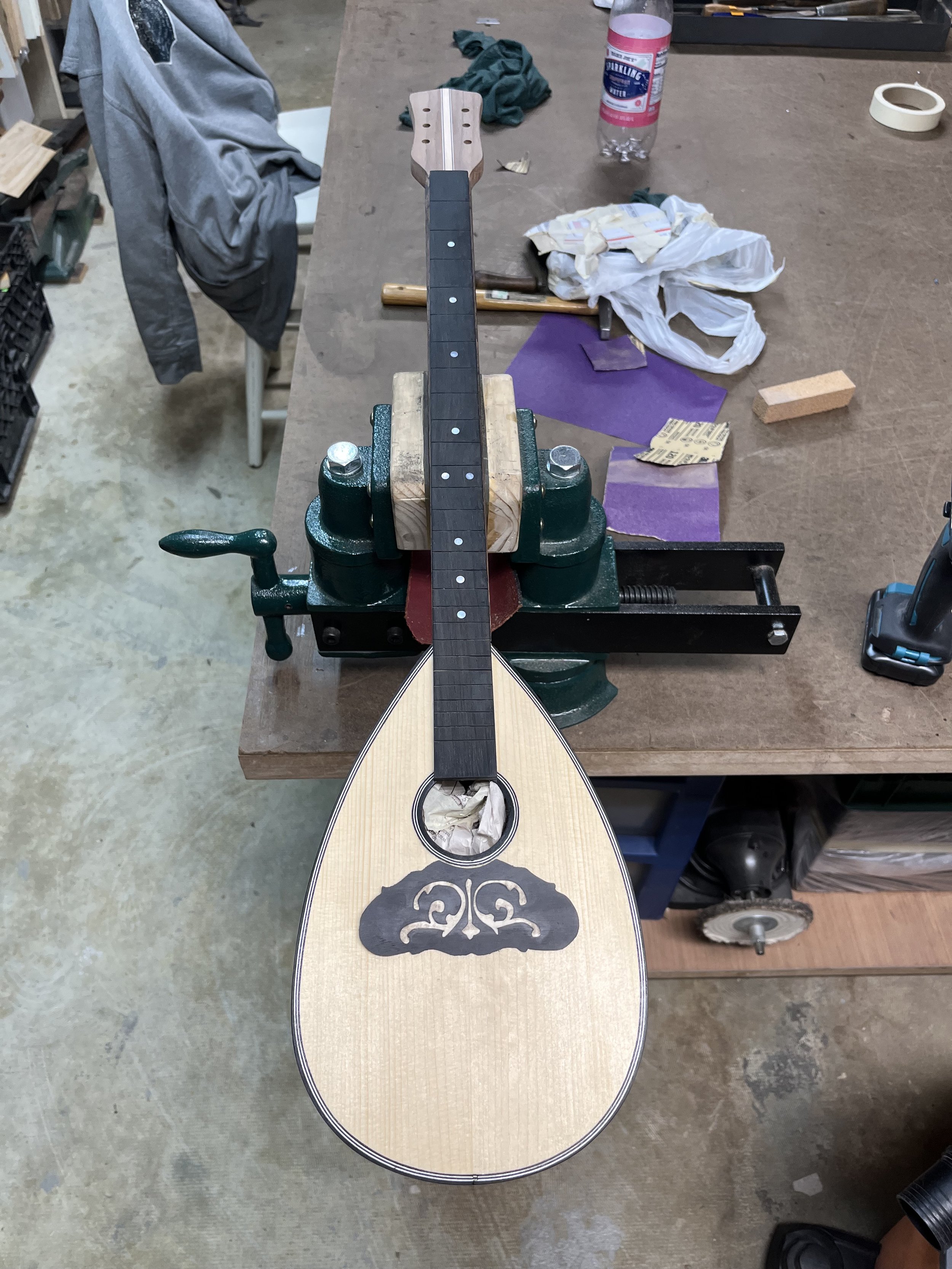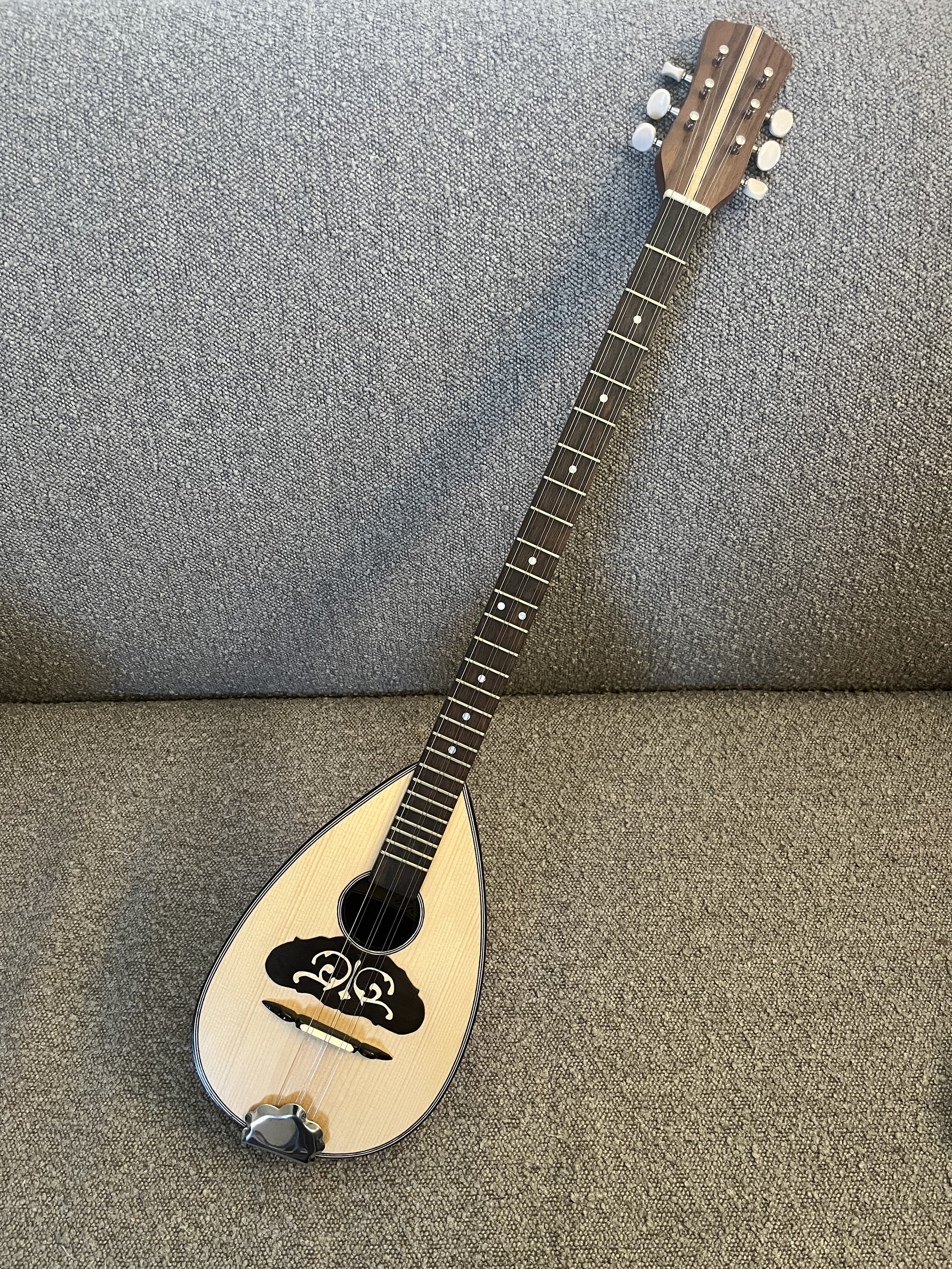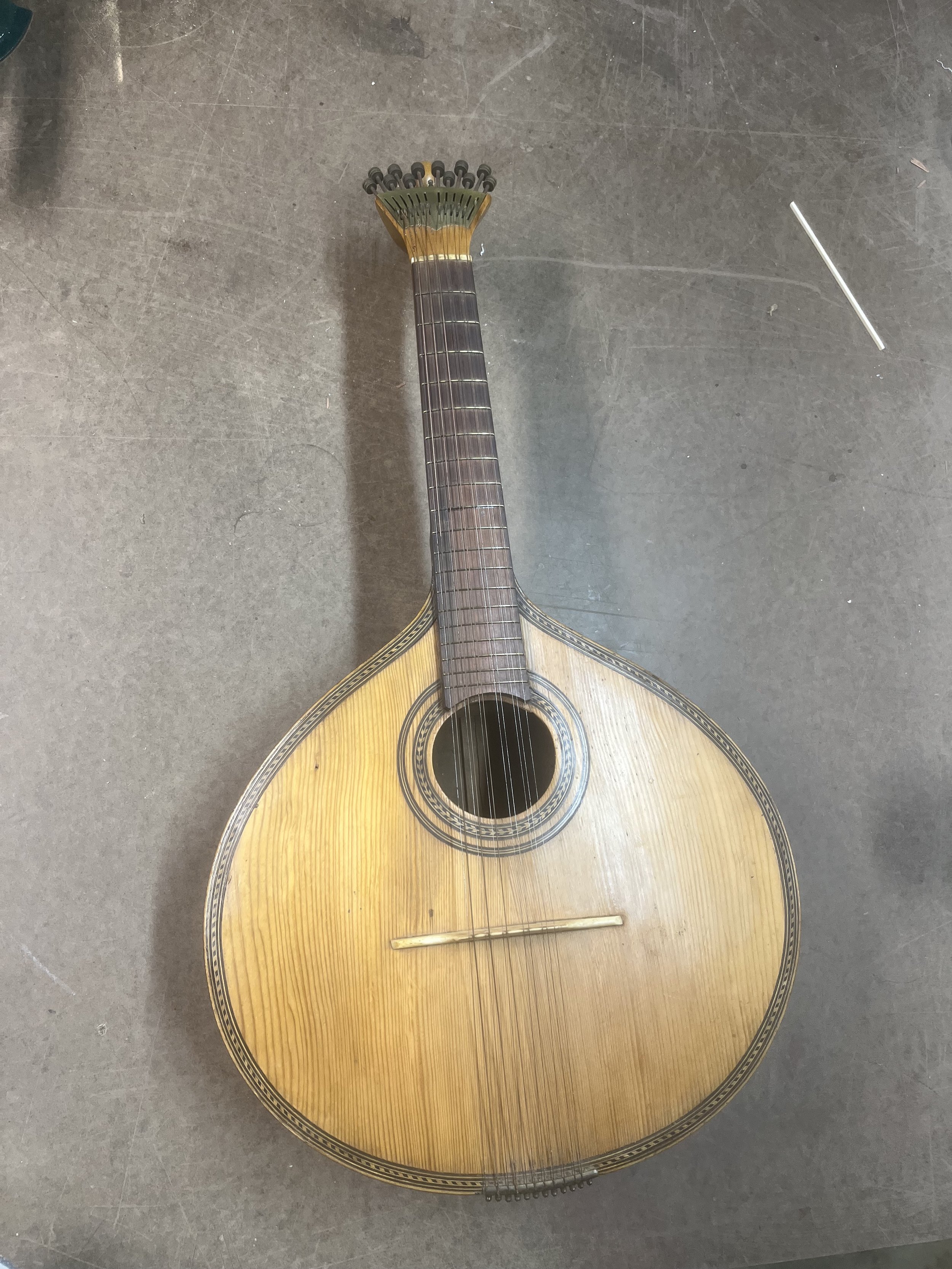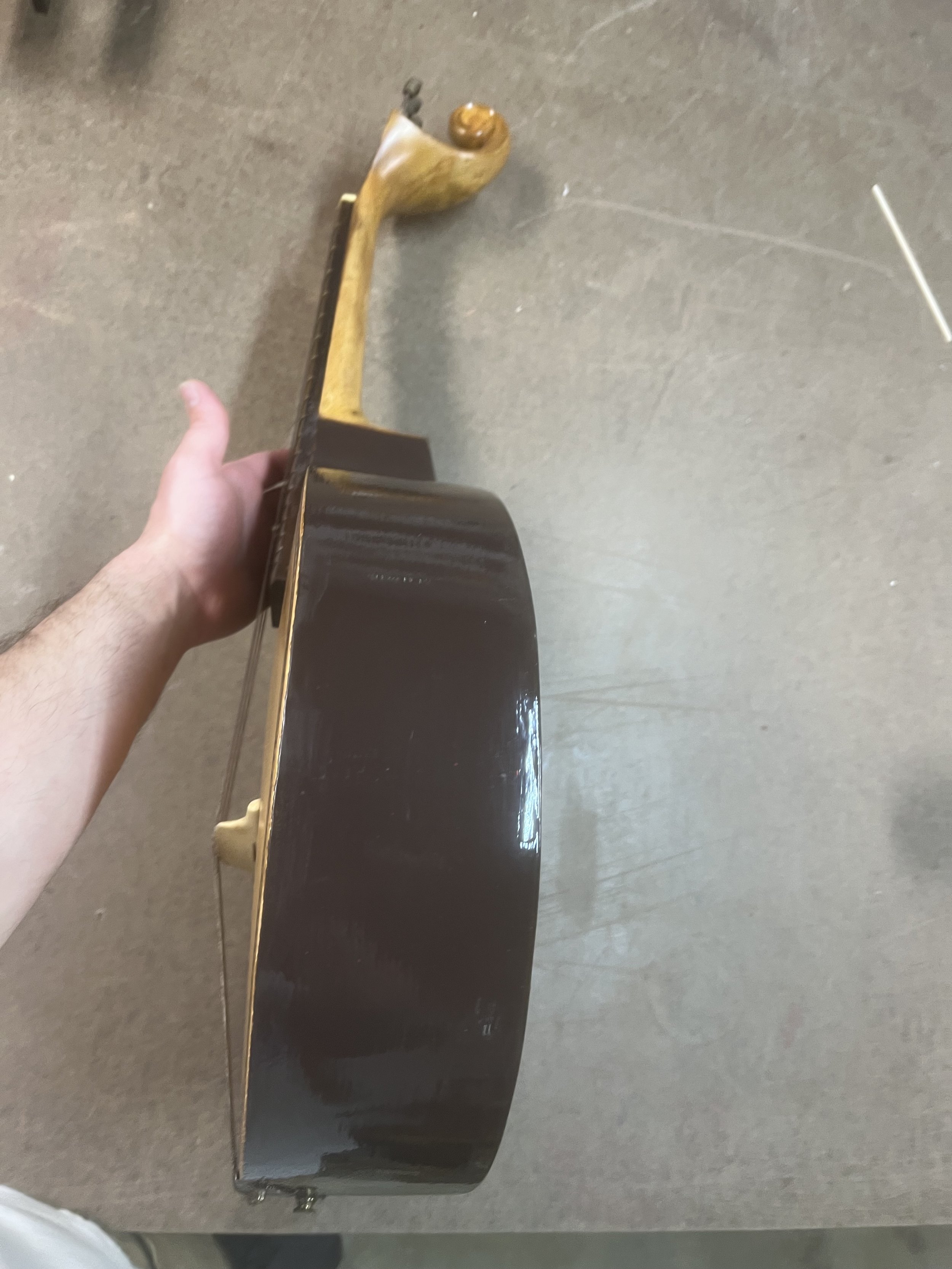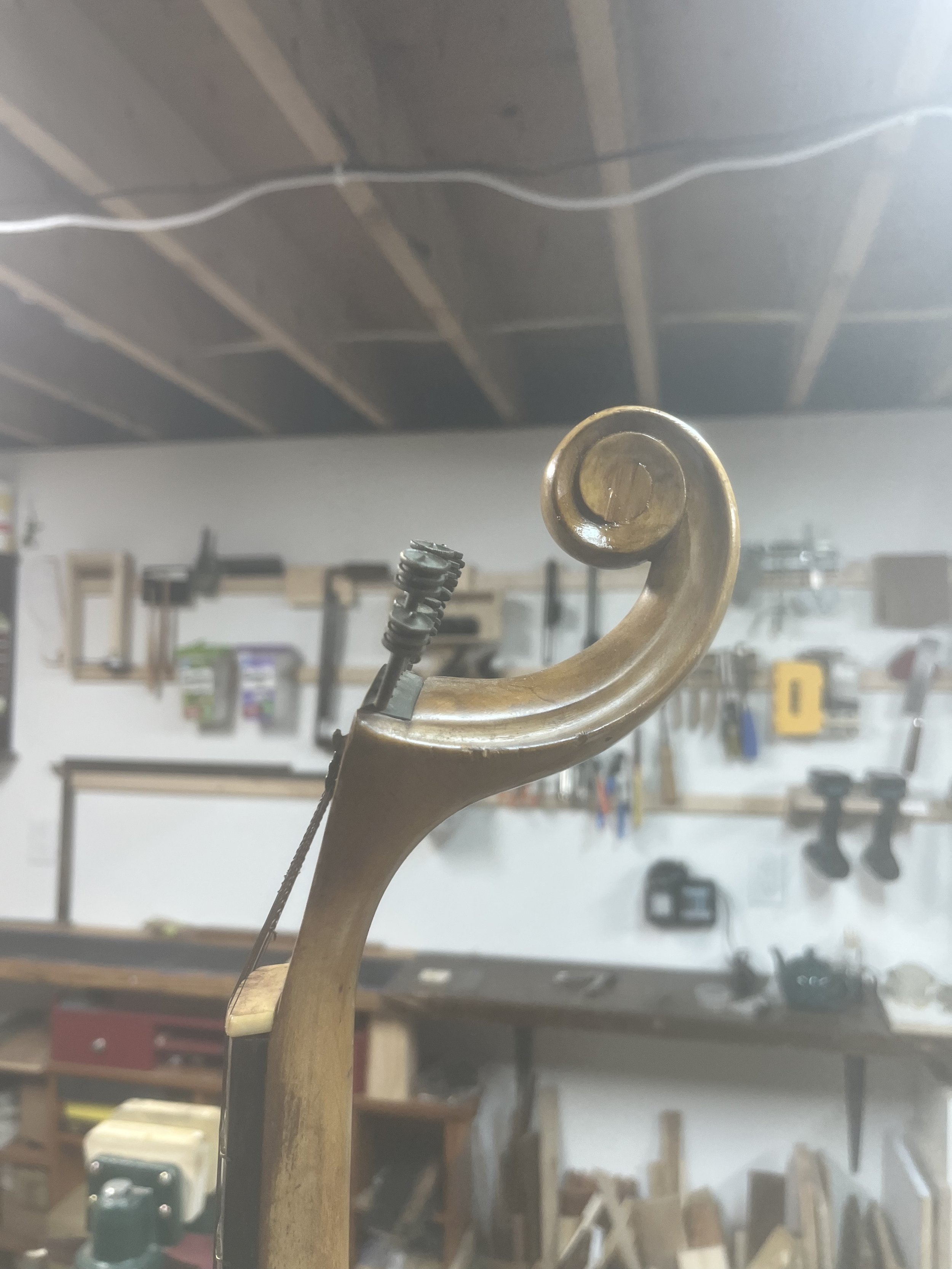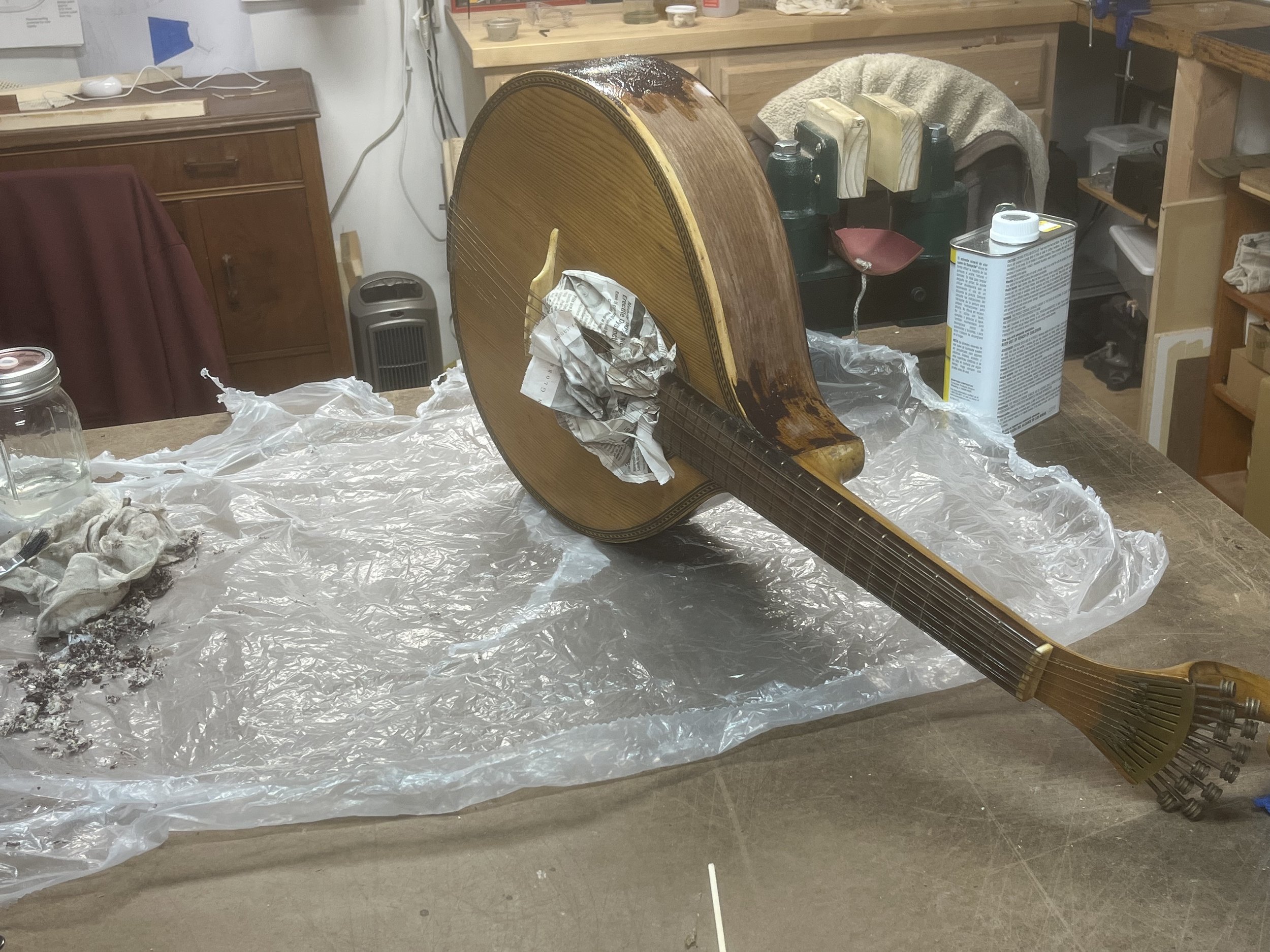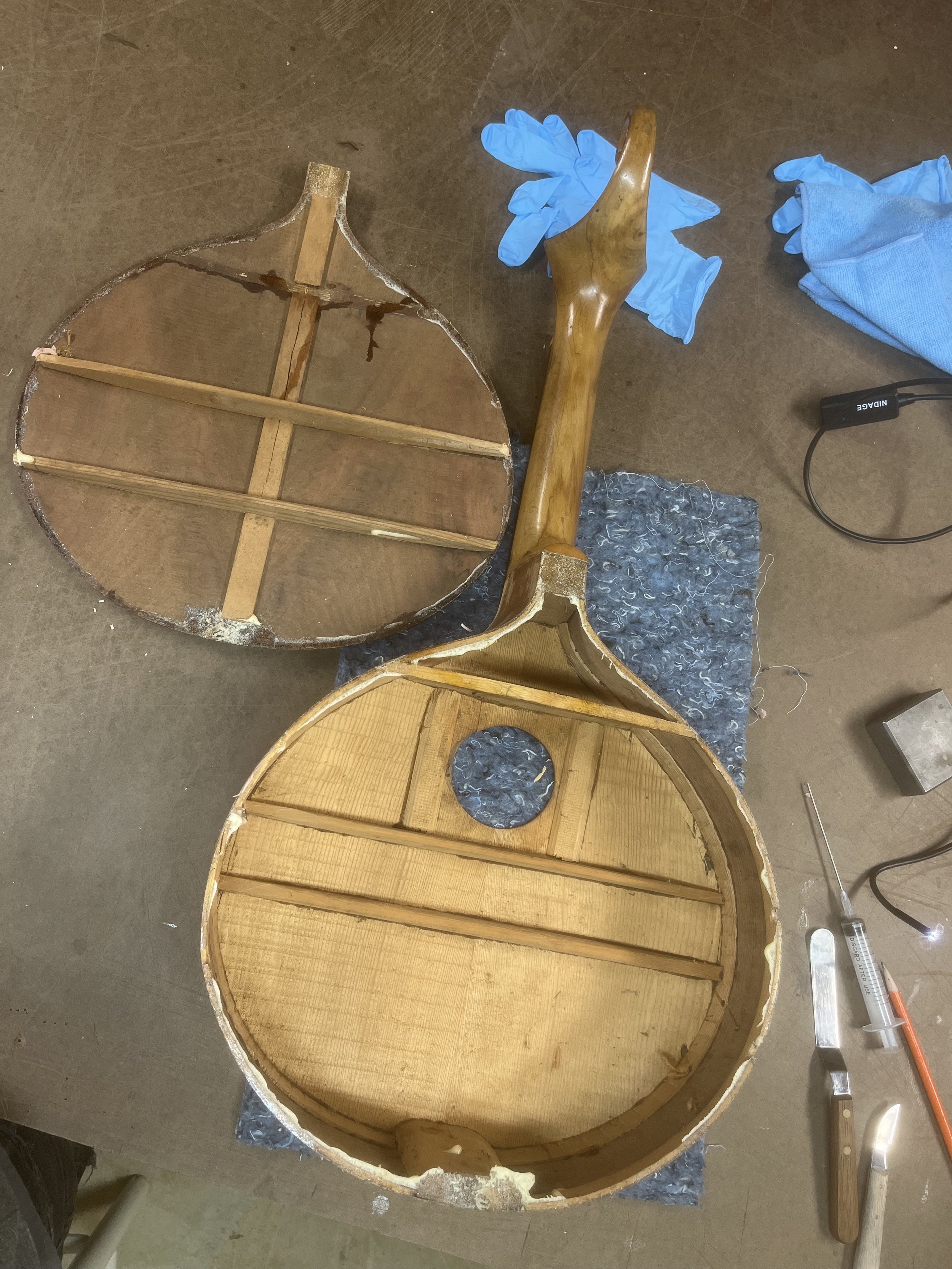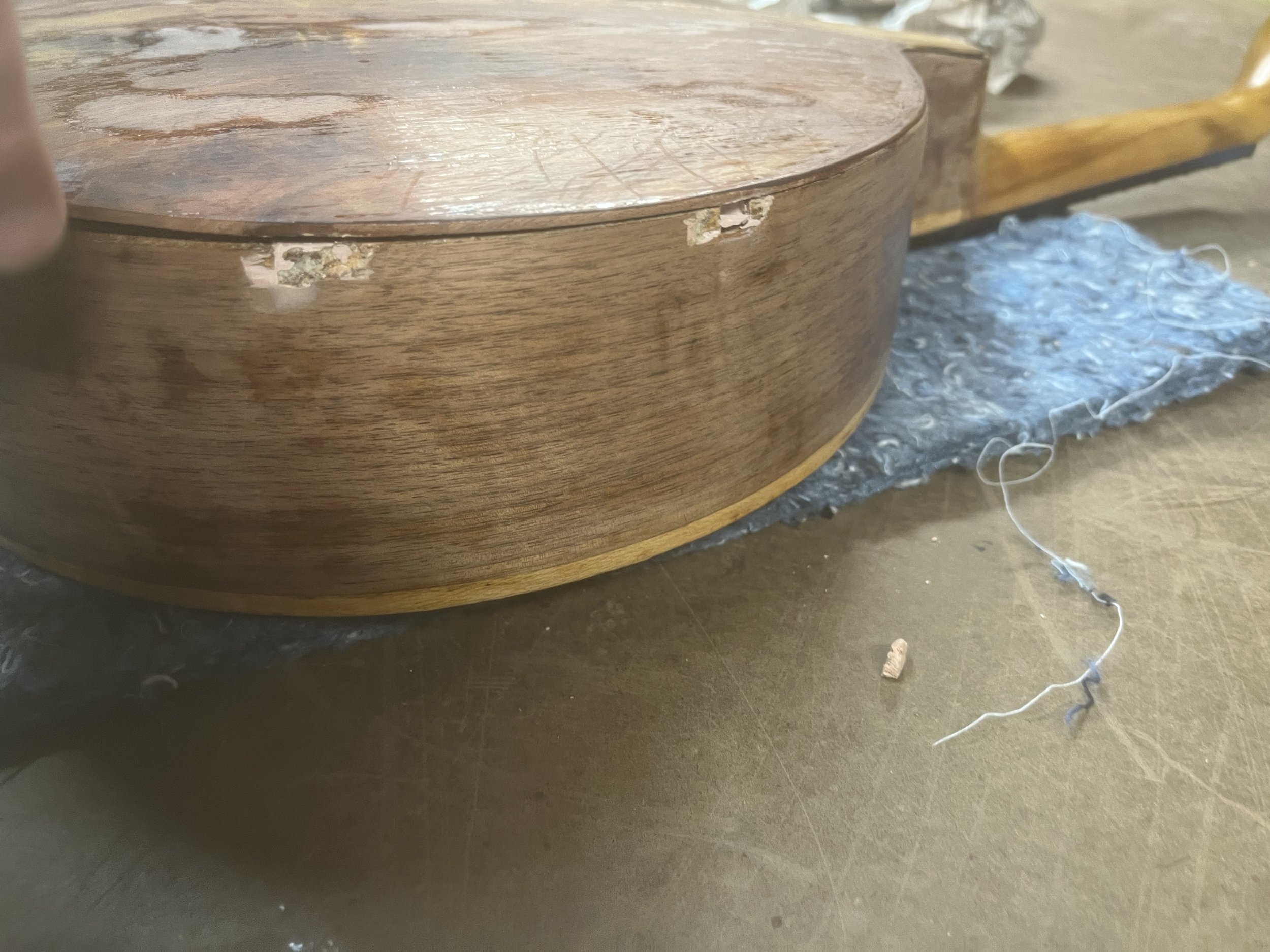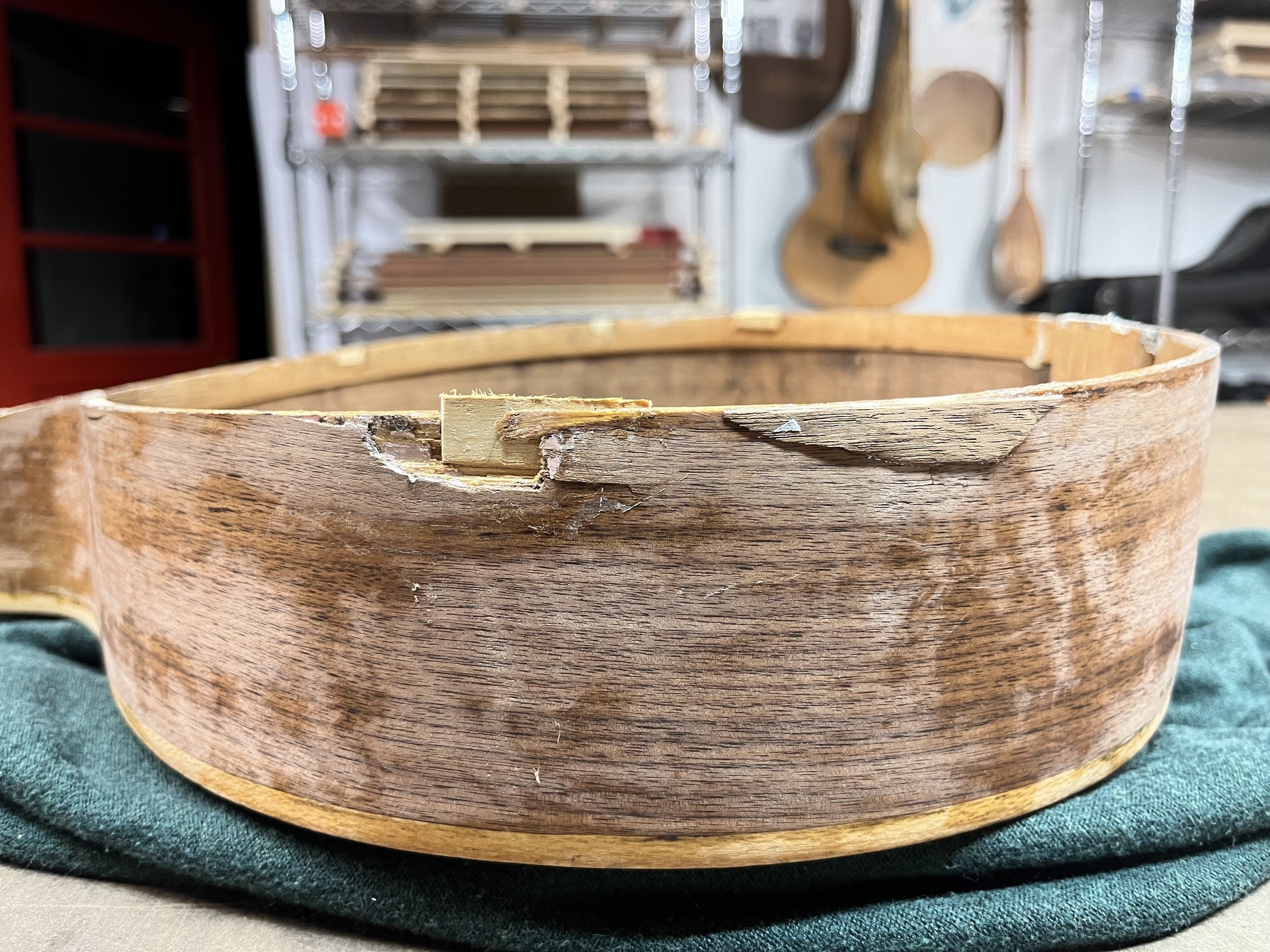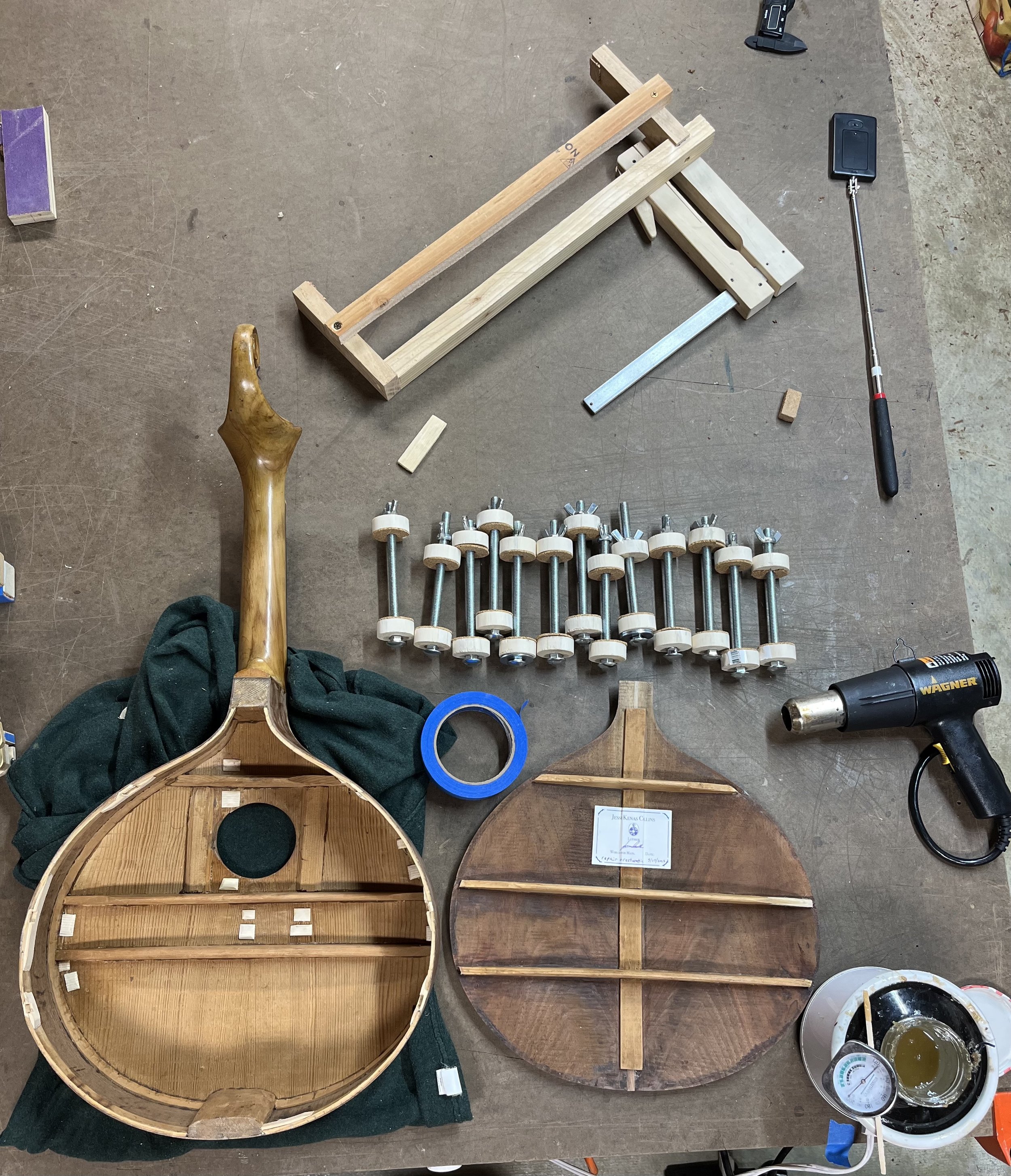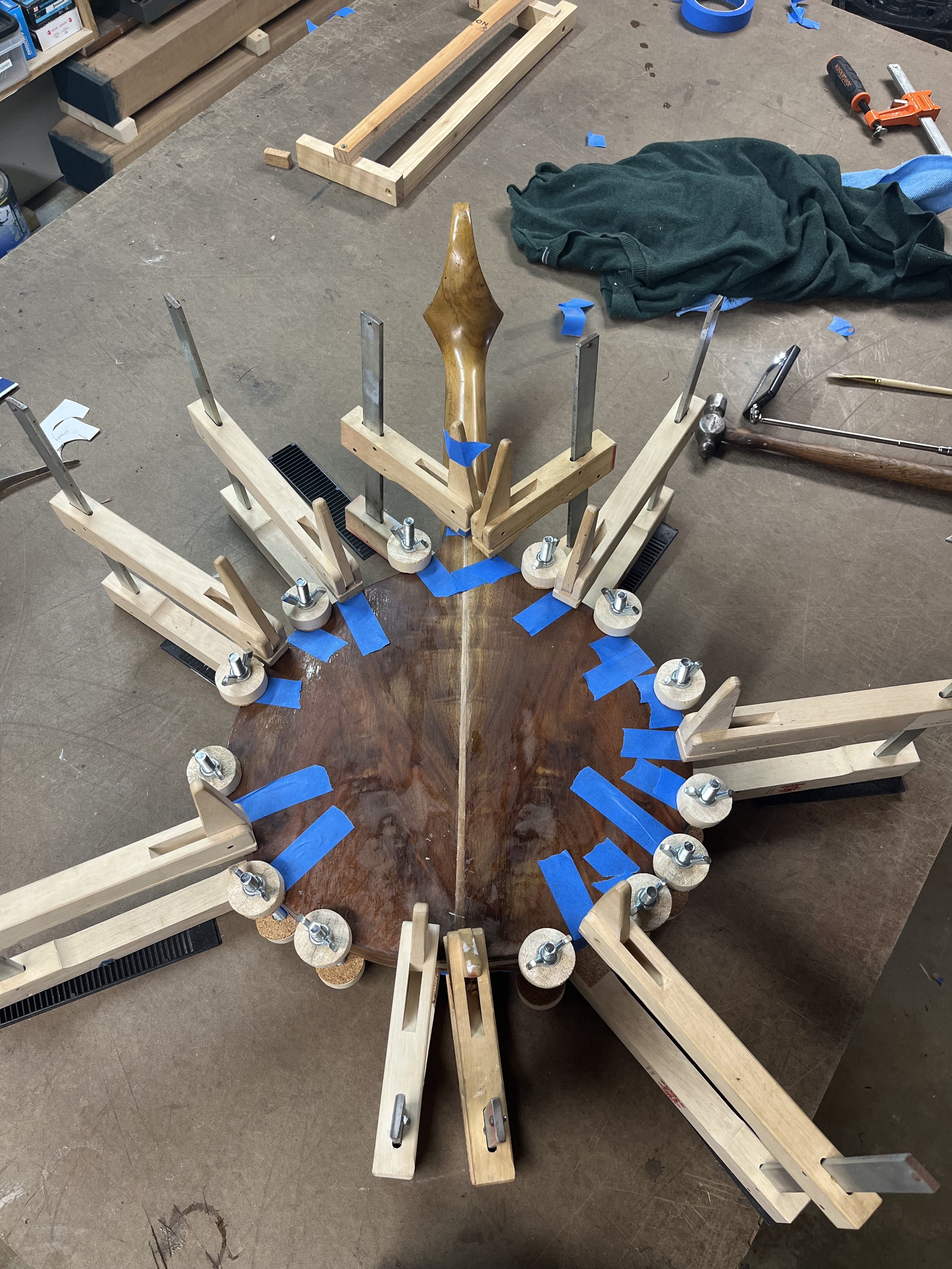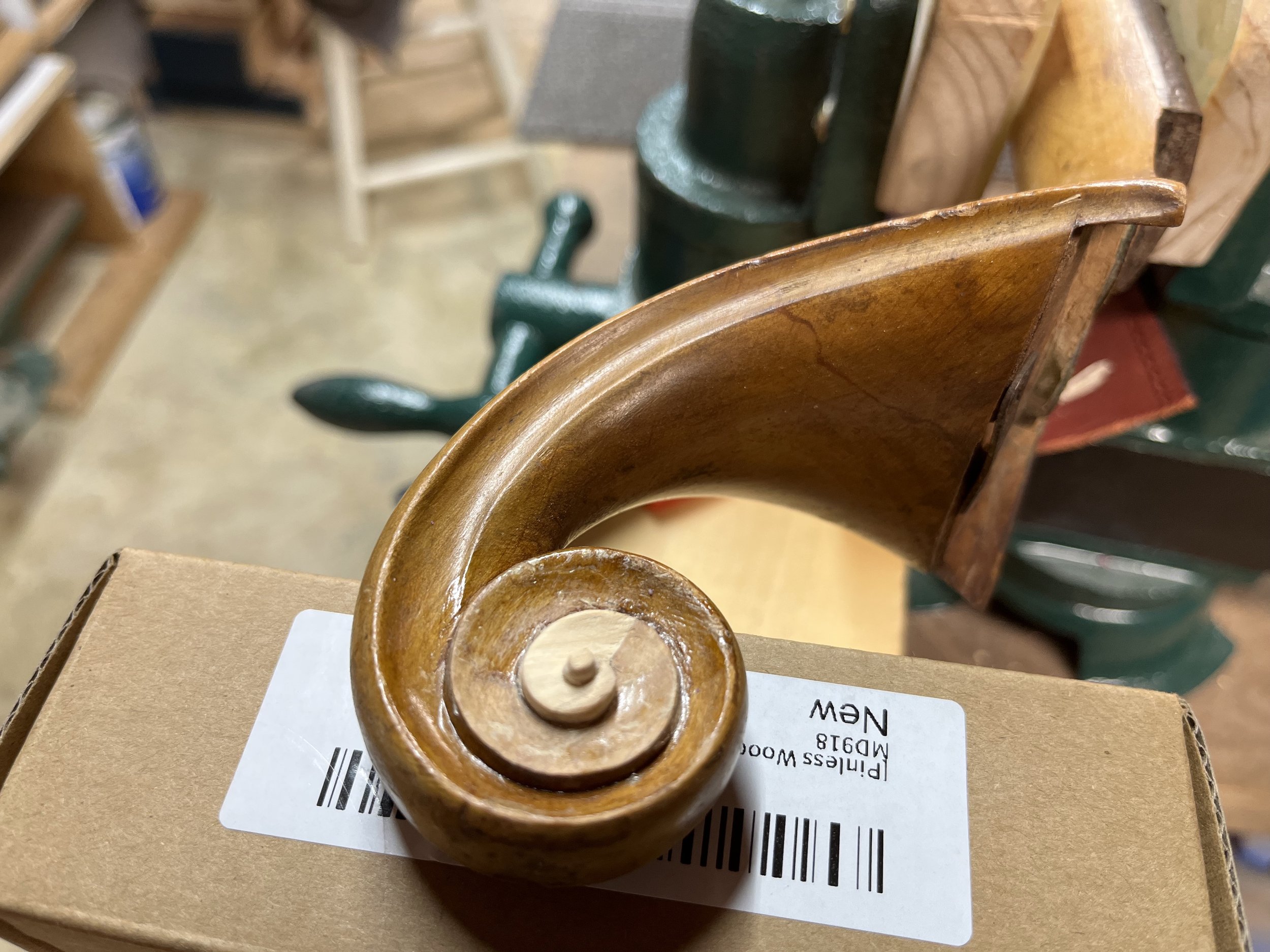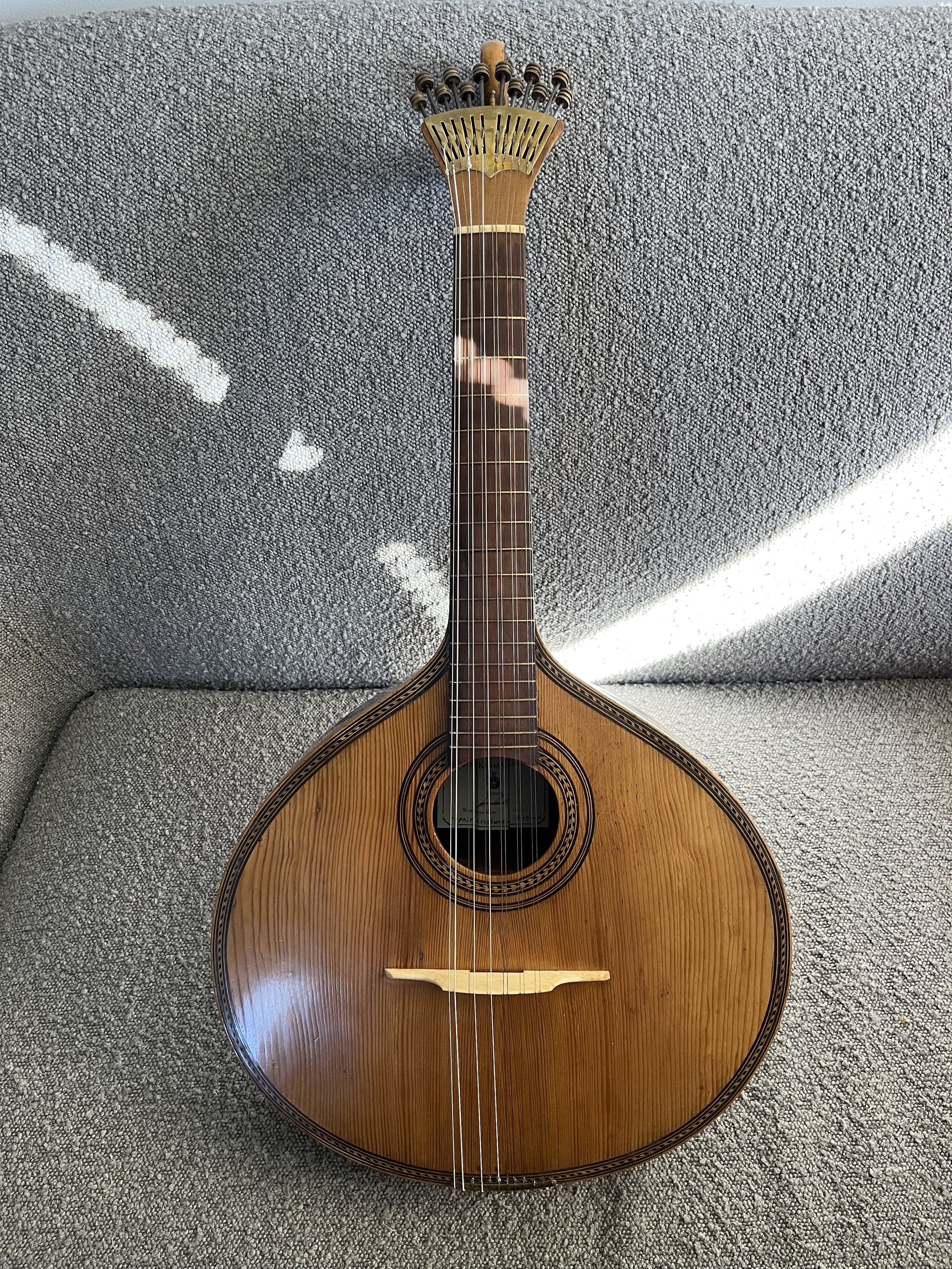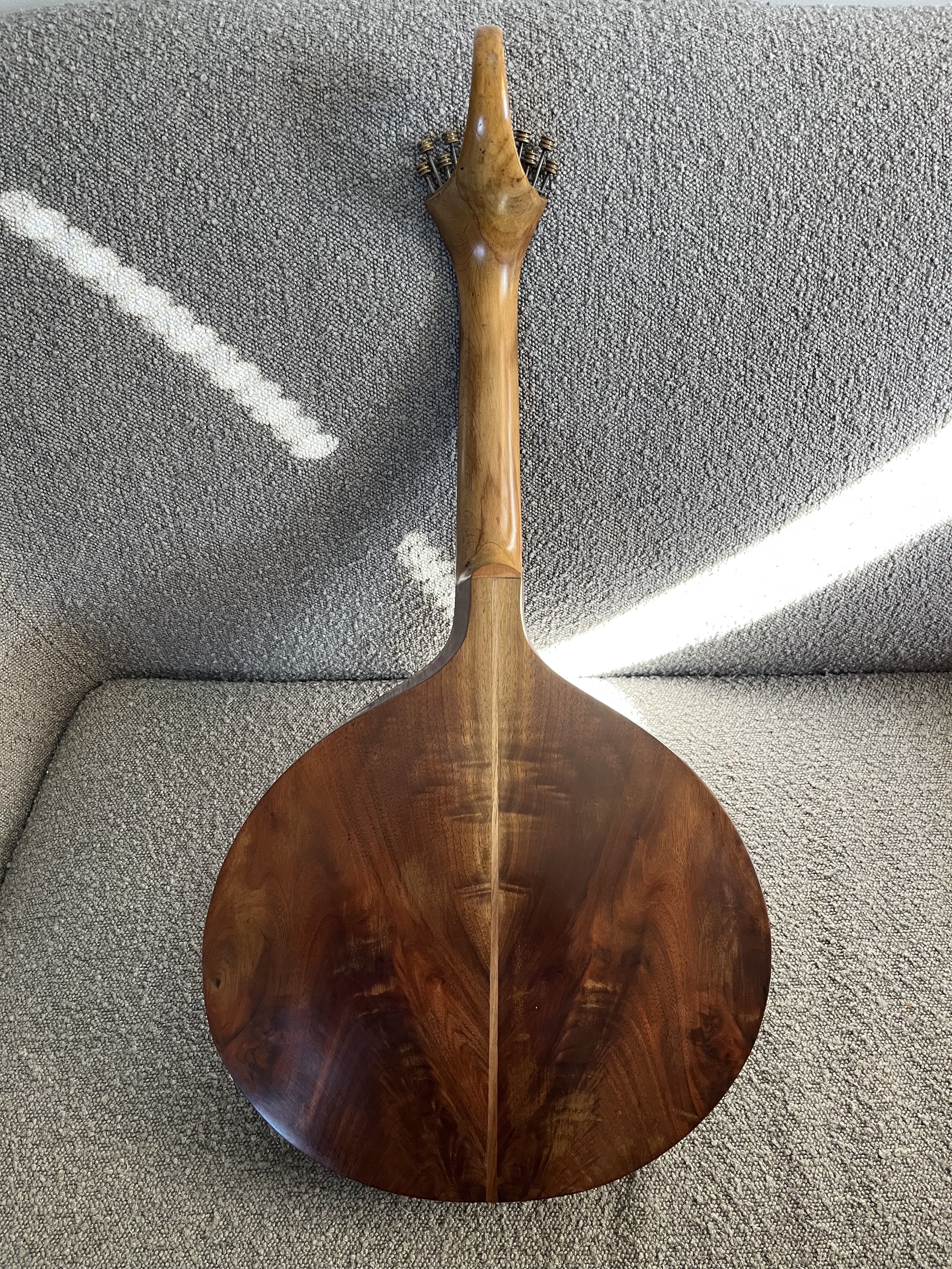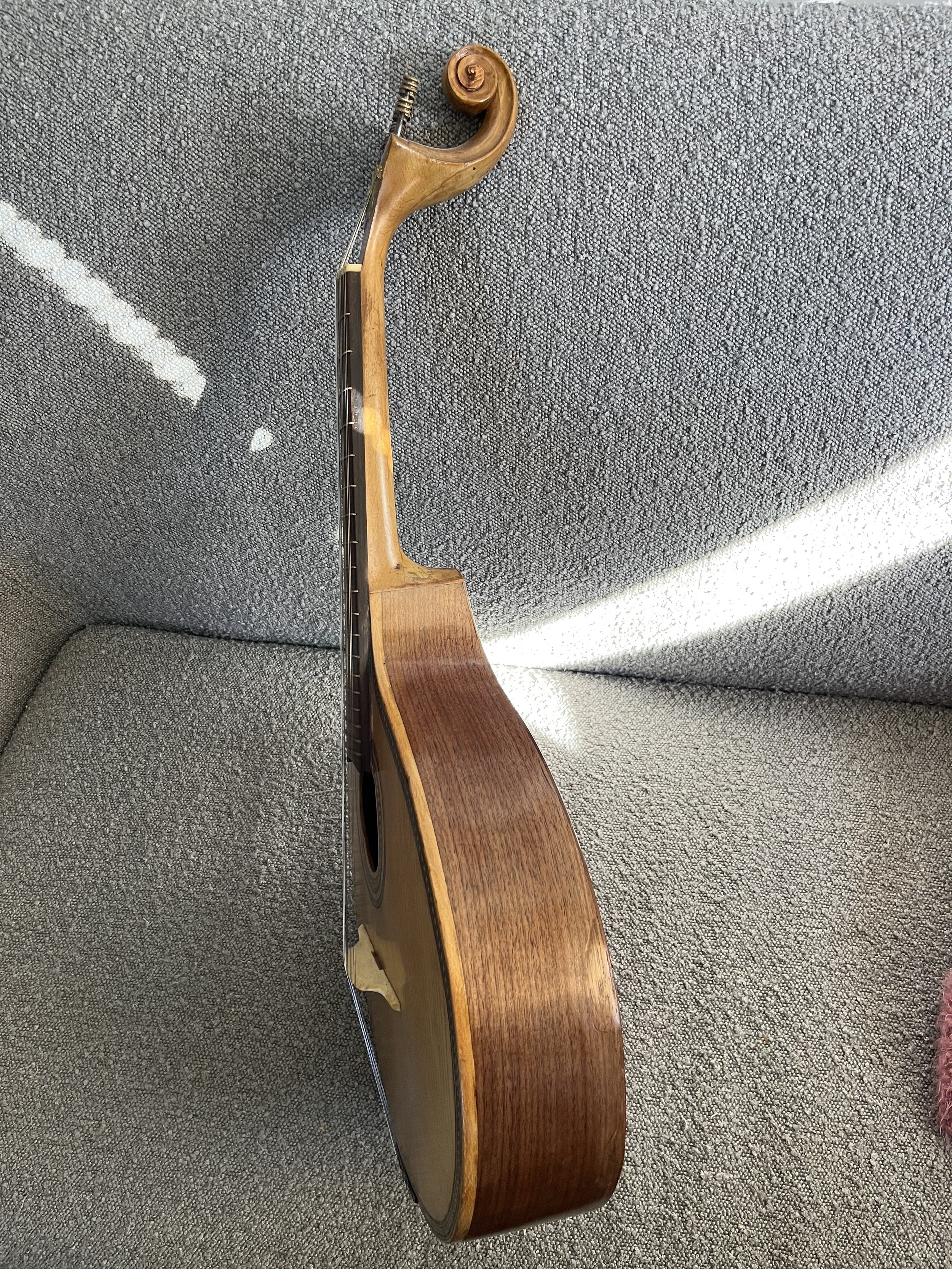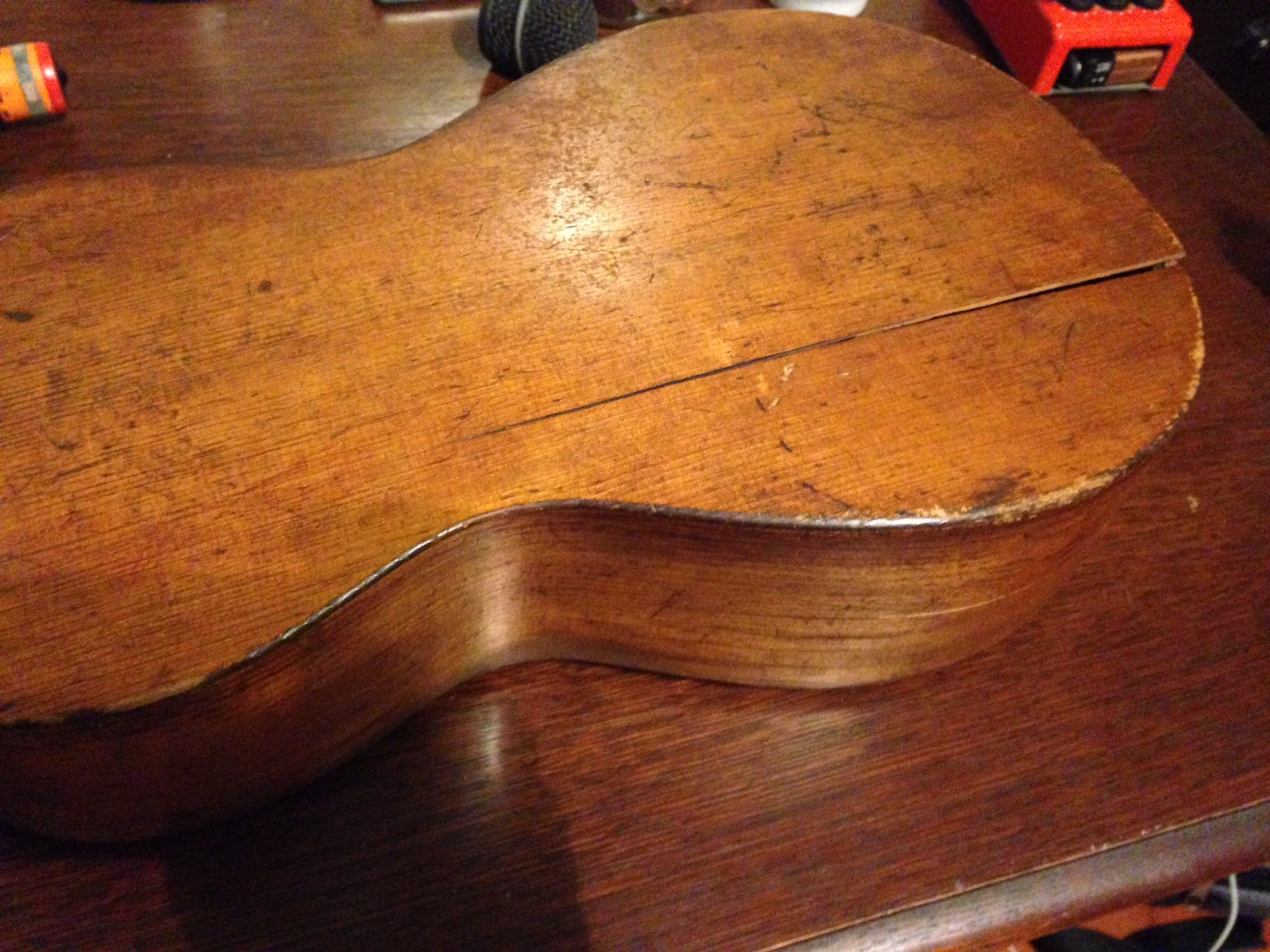Instruments
Instrument restoration and building projects
In addition to my practice in experimental music I’ve done musical instrument restoration and construction since 2010, and in recent years have begun to undertake that practice professionally. In 2022, thanks to the generous support of the Mass Cultural Councils Traditional Arts Apprenticeship program I’ve had the great opportunity to begin formally studying string instrument restoration and construction with master luthier Chris Pantazelos of Spartan Instruments. This apprenticeship has been nothing short of life changing, and I’m looking forward to the path it leads me down in the craft. Below are some images and information about various instrument restoration and construction project. If you’re interested in learning more or working with me on a instrument repair or build please feel free to reach out.
Arabic oud construction
Below are images of my Arabic model oud, with a string length of 61.5cm this instrument was designed as a compromise in size and aesthetic between the smaller body of traditional early 20th century instruments and the comparatively larger instruments of today. The ribs are made of ebonized walnut and maple, the top is spruce with geometric inaly of various hardwoods, the fingerboard is made of jatoba with additional inlay.
Turkish oud construction
Below are images of my Turkish model oud, with a string length of 58.5cm this instrument was designed as a compromise in size and aesthetic between the smaller body of traditional early 20th century instruments and the comparatively larger instruments of today. The ribs are made of canary wood and walnut, the top is spruce and the fingerboard is ebony.
Restoration of Sahak Kayalian oud
This oud was made by in 1926 by the Armenian maker Sahak Kayalian in Istanbul. The instrument had many cracks and separations in the bowl and the original top had been replaced sometime after the 1960s, along with replacement bridge, pick guard and rosettes. The restoration involved repair and stabilization of the bowl and original paper makers label, as well as modification and antiquing of replacement top to match references images of other instruments by the maker. Neck reset and peg bushings were also done along with a new ebony fingerboard to replace the thin plastic fingerboard from previous repairs.
Restoration of Wanes Mebayed oud
This oud was made in Aleppo Syria by the Armenian maker Wanes Mebayed in 1935. While the bowl was solid the top had undergone poor previous repairs to numerous cracks. The cracks were re-opened, cleaned and re-glued, in areas where material had been compromised, fillets were taken from the back of the soundboard to match the grain in the top, the grafts sites on the inside of the soundboard were then filled and stabilized with new spruce. All cracks and graft sites were then cleeted on the inside. A thick plastic pick guard had been put on the instrument sometime later in life so a replica of the originals makers pick guard was made after source images of another instrument by the maker produced in the same year.
Tzouras construction
The tzouras is a member of the Greek family of string instruments known as bouzouki. With a scale length of 600mm falls between the size of a full size bouzouki and the baglamas. The two instruments shown below were designed in a prewar style characterized by a slightly more oblong shape and reserved decorative aesthetic with a relatively small circular sound hole. The instruments of the prewar style represent a transitional period for the bouzouki family of instruments, influenced by Turkish and Anatolian iterations of the saz as well as by the Neopolitan bowl back mandolins of the late 19th and early 20th century.
Portuguese guitarra restoration
The Portuguese guitarra is the characteristic string instrument of fado music. In contrast to the Viola de terra which is used in the folk music of the Azores, the guitarra in its two forms (Lisboa and Combria) are associated with the urban musical traditions of the cities Lisbon and Coimbra. The instruments roots trace back to the Medieval citole, while its modern form is heavily influenced by the citerns of other European origin (English, German etc) which became popular in Portugal over the 17th & 18th centuries. The iconic spiked tuner mechanism called Preston Tuners traces back to the English citenrn maker John Preston of the 18th century. The instrument in the images below dates to the first half of the 20th century and while the maker is unknown it is quite well constructed. It was found on the South shore of MA where there is to this day a longstanding Portuguese community tracing back to the robust fishing industry of the early 20th century. The instrument had suffered severe cracking and shrinking in the back and sides and was crudely repaired with guerilla glue, epoxy fill, oil paint and oil based polyurethane finish. The restoration involved stripping of oil paint and finish down to the partially remaining shellac finish below. Removal of the back plate and all braces. The sides which suffered loss at the points of contact with the braces were repaired with matching walnut veneer and reinforces on the interior with solid spruce kurfing. The top was rejoined with addition of a fillet of walnut in the center to make up for the shrinking of the back plate. One compromised brace was repaired and several cracks in the instruments top were stabilized and cleated. The missing ends of the scroll at the head stock were grafted in with new wood and re carved. All work was done with hide glue and finished with traditional shellac French polish.
Viola da terra
The Viola da terra is a type of double course guitar from the Azores. Thanks to the large Portuguese communities around Massachusetts I’ve been fortunate enough to work on the restoration of two of these beautiful instruments. The first instrument pictured here is from the shop of an unknown maker, the second instrument which is much smaller in scale, was made by Miguel M. Ferreira of Providence Rhode Island. The inscription on the label of that instrument reads ““Miguel M. Ferreira builds and fixes all different kinds of string instruments such as violas, rabecas, violões, cavaquinhos, guitarras etc. N 74 Transit At Provedence R.T”. Any information on this maker would be quite welcome.
Kwitra
In 2020 I built the instrument below, loosely based on historical examples of a kwitra, which is a lute or oud relative from Algeria. The instrument that got me interested in making this is featured in an article on the oud migrations blog which you can find here.
Mandolin restoration
This restoration of an early 20th century Italian bowl back mandolin involved repair of cracks in both the bowl and top as well as the restoration of the deteriorated pick guard and inlay made of nitrocellulose.
Oud rebuild
Below are images of an oud rebuild I completed in 2020, this Syrian oud came to me with a severely damaged top, cracks in the bowl, broken neck and peg box. I decided to make an entirely new top, neck and peg box given the condition and quality of the original components. If any Arabic readers out there can identify the maker from the label pictured here I’d be grateful to know.
Vihuela
This Vihuela was the second string instrument I built while studying with Walter Stanul at the SMFA Boston. It is based on a composite of several historical instruments.












